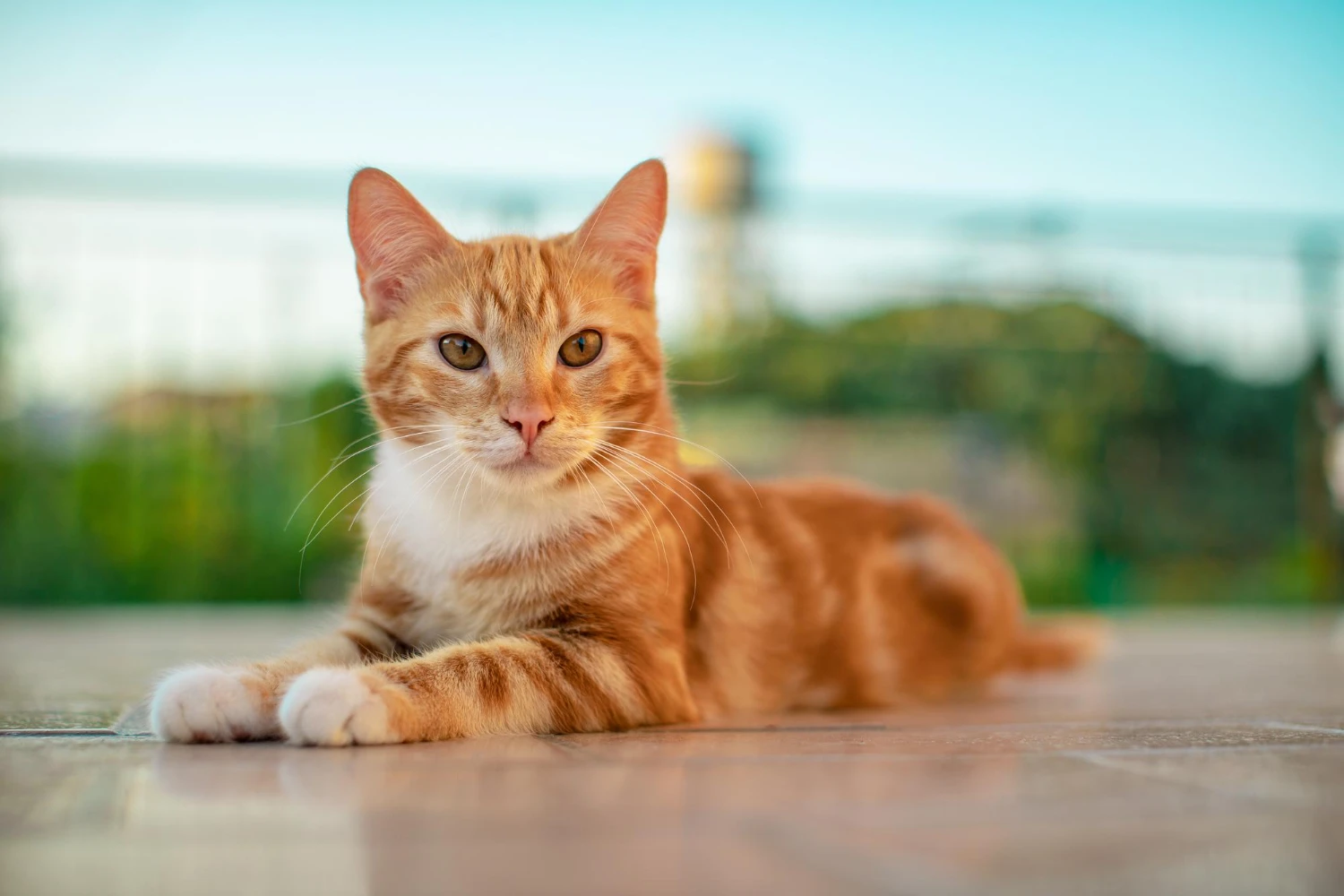
How can I take care of my cat during summer?
On hot days, you need to take care of your cat’s health, food, and exercise. Cats prefer temperate climates. They can suffer from various diseases in extreme cold or extreme hot weather.
Here’s how to care for your cat in summer:
Keep cats indoors: Keeping your cat indoors during summer is crucial because of the extreme heat, which can easily lead to heatstroke, a potentially life-threatening condition for cats. They can’t regulate their body temperature as effectively as humans, and being outside in hot weather can expose them to dangers like hot pavement, enclosed cars, and increased exposure to harmful UV rays from the sun.
For all these reasons, you should keep your cat indoors during the summer.
How to keep your cat cool indoors:
- Keep your cat in a cool place.
- You can bathe the cat.
- Or you can wipe their body with a wet cloth.
- Give them plenty of water to drink in the heat.
- You can use cooling mats.
Keep your cat hydrated:
Keeping your cat hydrated in the summer is important because hot weather significantly increases their risk of dehydration, which can lead to serious health complications like decreased circulation, organ dysfunction, and even heatstroke.
You need to make sure your cat is drinking enough water. It helps them maintain their core body temperature and supports important bodily functions like digestion and circulation.
During the summer, you can provide multiple cat water bowls in different parts of the house so that your cat has easy access to water.
Remember: Do not keep water in the water container for a long time; change the water in the container after 3 to 4 hours. If you don’t, it can become contaminated with bacteria, food particles, and dust, leading to potential health issues for your cat, as they are very sensitive to the taste and smell of their water, often refusing to drink stagnant water, which can lead to dehydration.
It’s best practice to change their water daily and clean their bowl thoroughly.
Wet food: Wet food is important for cats in the summer because it contains a high moisture content, which helps keep them hydrated. Essentially, they can get a significant portion of their hydration from their food itself.
So you should mix some water with the food you give them.
Groom your cat regularly:
Excess fur on a cat’s body can make them uncomfortable in the heat, especially for those cats with very large fur. A cat’s body doesn’t want to get cold easily if it has extra fur. Cats naturally shed more fur in summer than in winter.
These furs stick to other furs on their body, which does not allow their body to cool down.
That’s why you should remove excess fur by brushing your cat’s entire body at least twice a day during the hot season.
Keep your cat calm: Keeping your cat calm in the summer is important because it can help prevent heatstroke and dehydration, which can lead to illness or even death. Cats instinctively conserve energy during the hottest parts of the day, so you might notice them sleeping more in the summer.
What food should I give my cat in summer?
A cat’s eating habits change a lot during hot days. Generally, cats eat less food in summer than in other seasons.
Cats don’t need as many calories in the summer because they don’t need to produce body heat to stay warm. They also tend to spend more time resting in the heat, so they don’t use as much energy.
Here are the types of foods you should feed your cat in summer:
Frozen wet food:
Feeding your cat frozen wet food in the summer is a good idea because it helps keep them cool and hydrated, especially in hot weather when they might be less inclined to eat regular food, as the cold temperature is refreshing, and the high moisture content in wet food aids in hydration.
Here’s how you prepare frozen wet food:
- Select a high-quality, pate-style wet cat food that your cat already enjoys.
- Mix a small amount of water or bone broth into the wet food to create a smooth consistency.
Optional: Consider adding a pinch of dried catnip or a few small pieces of cooked, finely chopped meat for extra flavor.
- Pour the mixture into an ice cube tray, small silicone molds, or even small paper cups.
- Place the tray in the freezer until the food is completely frozen.
Homemade broth or soup:
In the summer, you should provide your cat with homemade broths or soups because it can significantly increase their water intake, which is crucial to prevent dehydration, especially when temperatures are high and cats tend to drink less water on their own. The added flavor from the broth can entice them to drink more, keeping them hydrated and healthy.
Here’s how you prepare broth or soup:
- Meat choices: Use only plain, unseasoned chicken, turkey, or fish bones (remove large pieces of meat).
- Vegetables (optional): Add very small pieces of carrots, celery, or green beans, but be cautious as some cats might not tolerate them well.
- No added seasonings: Never add salt, pepper, onions, garlic, or any other spices to your cat’s broth.
- Simmering process: Let the mixture simmer for a couple of hours to extract flavor from the bones.
- Strain carefully: Once cooked, strain the broth thoroughly to remove any bone fragments or vegetable pieces.
Other things to keep in mind:
- Avoid high-fat or high-protein foods: These can increase your cat’s body heat and metabolic rate.
- Limit dry food: While dry food is convenient, it can be dehydrating, especially in hot weather.
- Provide plenty of fresh water: Make sure your cat always has access to clean, cool water. You can also add ice cubes to their water bowl.
How often should I bathe my cat in summer?
Bathing can be an easy way to keep a cat cool in the heat. But bathing every day will not be good for their health. In the summer, you can bathe your cat every 4-6 weeks if they are an indoor cat, but if they are an outdoor cat, you might need to bathe them more frequently, depending on how dirty they get, potentially every 2-4 weeks depending on their activity level and exposure to dirt.
As an alternative to bathing, you can wipe your cat’s body with a wet cloth to keep them cool.
Most common diseases cats get during summer:
Diseases that can occur in cats during summer are:
Dehydration: Cats can suffer from dehydration in the summer due to a number of factors, including:
- Hot weather: Cats can lose fluids through panting and sweating through their paws.
- Lack of water: Cats may not drink enough water or may not have access to water.
- Vomiting and diarrhea: These can cause a rapid loss of fluids.
- Underlying conditions: Dehydration can be caused by an underlying condition such as diabetes, hyperthyroidism, or kidney failure.
Signs of dehydration:
- Dark-colored urine
- Lethargy
- Skin tenting
- Sunken eyes
- Dry mouth
- Loss of appetite
- Panting or increased breathing.
If you see these symptoms in your cat, you should definitely consult a veterinarian.
Heatstroke: Heatstroke occurs in cats when they are unable to regulate their body temperature and dissipate heat. This can happen when a cat is exposed to high temperatures, doesn’t have access to shade or water, or is in a non-ventilated environment.
Signs of heatstroke:
- Panting
- Restlessness
- Drooling
- Red gums or tongue
- Vomiting or diarrhea
- Rectal temperature: Your cat’s rectal temperature may be greater than 104°F.
- Disorientation
- Collapse
To prevent your cat from getting heatstroke, you can:
- Provide enough water.
- Keep the cat cool.
- Groom your cat daily.
If you see the above signs in your cat, you should definitely consult a veterinarian.



